It is widely recognized that there are two primary methods of obtaining genuine diamonds: through natural extraction from the Earth’s layers or by cultivating artificial diamonds in a laboratory.
There exists a significant amount of confusion surrounding lab-created diamonds, with misinformation often leading to the misconception that these gems are inauthentic. To address this, we aim to explore the comparison between lab-created diamonds and natural diamonds, shedding light on surprising aspects and providing you with the knowledge needed to navigate the natural vs. lab-made debate.
In order to facilitate your understanding of this subject, we have conducted thorough research and compiled comprehensive information. Prepare yourself to delve into this intriguing discussion of natural diamonds versus lab-grown diamonds. Without any further delay, let us embark on this enlightening journey through the article!
DESIGN YOUR OWN ENGAGEMENT RING: START WITH A SETTING OR START WITH A DIAMOND. IT’S REALLY UP TO YOU!
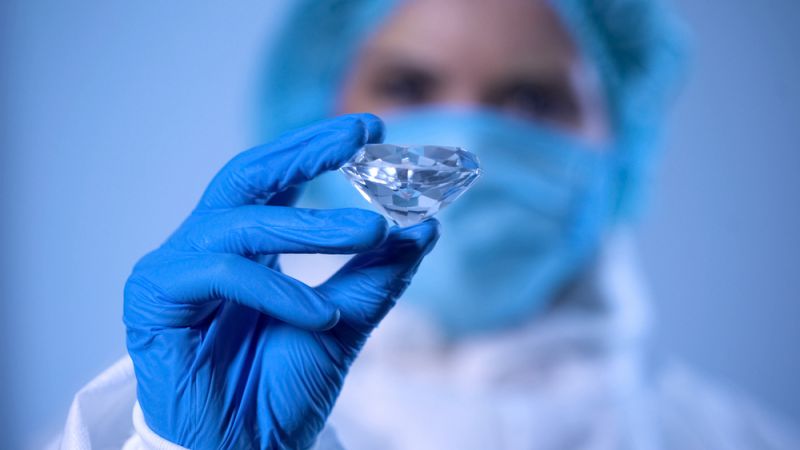
What Are Lab-Created Diamonds?
Lab-grown or lab-created diamonds have become a prominent topic of discussion in the realm of diamonds and jewelry. Some individuals hold reservations about these diamonds without any concrete justification, simply because they are not considered “natural.”
However, here’s the truth: Lab-created diamonds are often virtually indistinguishable from natural diamonds, particularly to those lacking the necessary equipment for precise differentiation.
These diamonds are cultivated in highly controlled laboratory environments, employing advanced technological processes that replicate the conditions in which diamonds naturally form beneath the Earth’s crust.
Essentially, lab-grown diamonds are genuine diamonds with an accelerated growth process. This does not imply that they are of lesser value. They possess the same characteristics as natural diamonds, including clarity, color grade, hardness on the Mohs scale, and more.
Lab-created diamonds are essentially identical to their mined counterparts, manufactured in a quicker and more cost-effective manner than stones extracted from ocean depths or mining sites.
Moreover, lab-grown stones exhibit the same durability as “real diamonds,” ensuring that you need not worry about their longevity compared to natural or mined diamonds.
Diamonds are forever, regardless of their origin. This is the most prevalent misconception. People often assume that the difference in price, which we will delve into later, signifies a discrepancy in quality between the two options.
The first lab-grown gem was created in 1954 as part of “Project Superpressure.” This means that lab-grown diamonds have been in development for 68 years, signifying a substantial period of time.
Experts, including dedicated scientists, have been specializing in this diamond-growing method and possess extensive knowledge and expertise. There is no reason to harbor apprehensions or doubt the quality of lab-created stones.
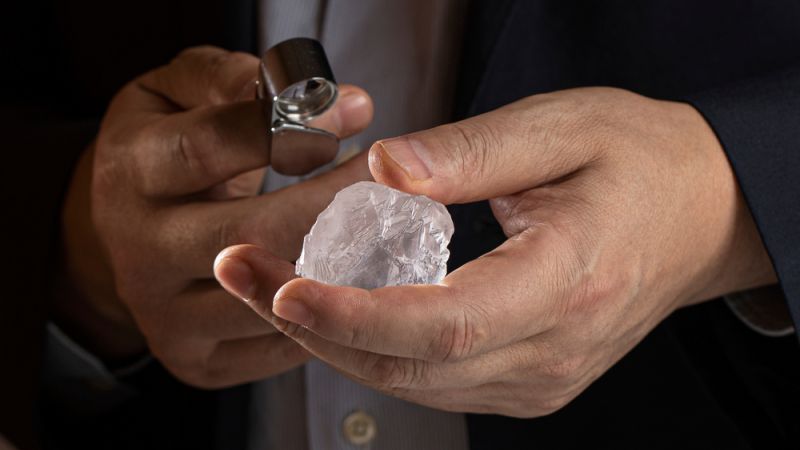
How Are Natural Diamonds Made?
Now that we understand the process of creating lab-grown diamonds, let’s refresh our knowledge about how natural diamonds are formed and obtained.
Diamonds are essentially carbon that has undergone extreme pressure and high temperatures, resulting in the formation of diamonds. It takes between 1 and 3.3 billion years for a natural diamond to develop, which is a remarkably long time.
This extended formation period, coupled with the limited quantity of natural diamonds on Earth, has led to the development of lab-grown diamonds as an alternative. These are the two primary reasons why lab-cultivated diamonds have gained popularity.
Now, let’s focus on natural diamonds. They are created under specific geological conditions, which means they can only be found in certain regions where these conditions were present.
After their formation, natural diamonds can remain in the Earth’s crust for millions of years before being discovered, excavated, cut, and polished. This is typically the process involved in most cases. Thus, the challenge lies in the excavation phase.
Natural diamonds are usually extracted from large mining sites located deep within the earth or submerged under bodies of water such as seas or oceans. The process of excavation is complex and requires expensive machinery. This contributes to the high cost of natural diamonds found in local jewelry stores.
After excavation, natural diamonds undergo cutting and polishing, a process that is also applicable to lab-grown diamonds. Once these steps are completed, the diamonds are shipped to retailers. It is worth noting that the transportation cost of shipping diamonds worldwide to regions where they are not naturally found can be substantial.
Prior to the ability to produce diamonds in laboratories, this traditional method of acquiring diamonds was the sole option available, which explains its continued popularity and preference among people.
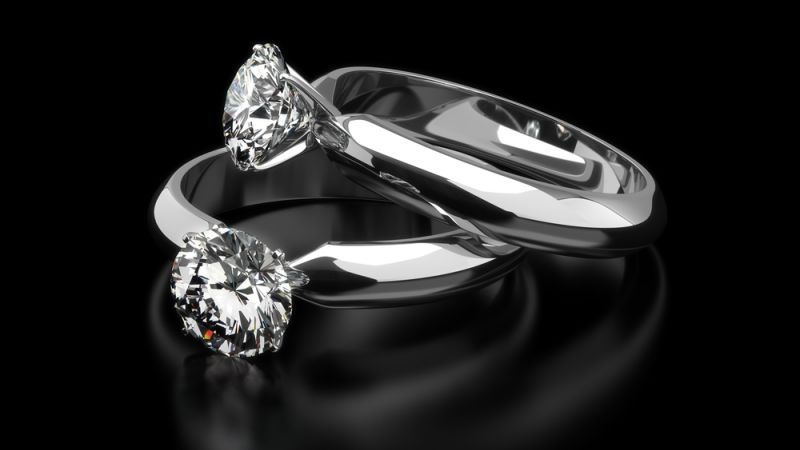
Lab-created Diamond Vs. Natural Diamond: Similarities & Differences
There are numerous similarities between natural and lab-grown diamonds, more than people typically assume. Let’s delve into these similarities and clear up misconceptions about their differences.
First and foremost, in terms of appearance, lab-grown and natural diamonds are indistinguishable. In fact, lab-created diamonds can sometimes possess superior clarity due to advanced technological control during their growth process. The range of colors available in natural diamonds can also be replicated in lab-grown diamonds. While early lab-grown diamonds had limited color options, advancements have expanded the choices available.
Furthermore, the way both types of diamonds are cut results in an identical visual outcome. If a natural diamond and a lab-grown diamond are cut in the same manner, creating two identical 1-carat diamonds, it would be nearly impossible to tell them apart.
Now, let’s address the hardness of lab-grown diamonds. Diamonds are known for their exceptional hardness. Contrary to misconceptions, lab-grown diamonds have the same level of hardness as natural diamonds and are also graded 10 on the Mohs scale. Thus, there is no need to worry about lab-grown diamonds being any less durable or softer than natural diamonds.
Lastly, lab-grown diamonds exhibit the same brilliance and sparkle as their natural counterparts when set in jewelry. They allow light to pass through them in a similar manner, resulting in a stunning visual appearance.
Moving on to the differences, it is worth noting that there are relatively few distinctions between lab-grown and natural diamonds. While some may believe that the similarities are only superficial, this is not accurate.
The most significant difference lies in the price. Lab-grown diamonds tend to be more affordable compared to natural diamonds, allowing for the acquisition of more diamonds for a given budget. However, when it comes to their internal structure, color, shape, and physical properties, lab-grown diamonds closely resemble natural diamonds.
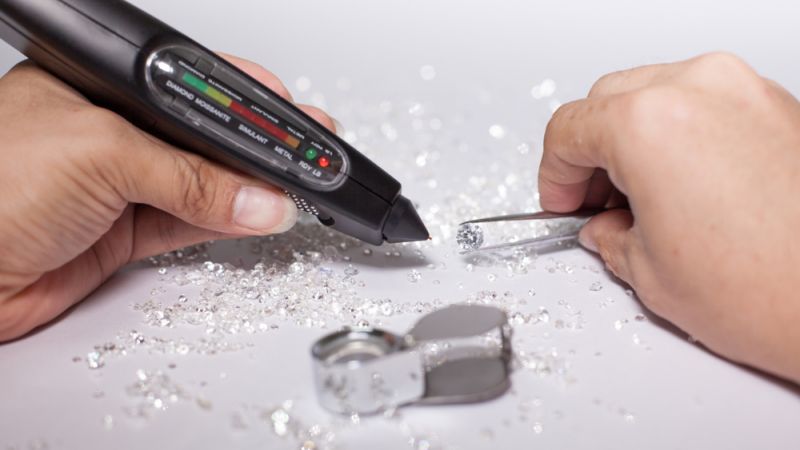
Testing Authenticity
The authenticity of lab-grown diamonds often raises questions among people. However, lab-grown diamonds do pass the authenticity test, and it’s challenging for most diamond testers to differentiate between lab-grown and natural diamonds.
Diamond testers typically examine heat or electrical conductivity, and both lab-grown and natural diamonds exhibit similar conductivity properties. While diamonds are generally poor electrical conductors, they are efficient heat conductors due to the strong chemical bonds between carbon atoms. Lab-grown diamonds share this characteristic and conduct heat just like natural diamonds.
Many individuals mistakenly believe that diamond testers can distinguish between lab-grown and natural diamonds. However, a different method is required to differentiate between them, surpassing the capabilities of standard diamond testers.
The distinction lies in the presence of nitrogen. Natural diamonds contain traces of nitrogen, while lab-grown diamonds do not, as they are created in controlled environments. Testing positive for nitrogen indicates a natural diamond, while a negative result suggests a lab-grown diamond. Standard testers that solely examine electrical or heat conductivity cannot determine the origin of a diamond. This is an important consideration to keep in mind.
However, it’s essential to exercise caution and always request a certificate. Some individuals may attempt to take advantage of the difficulty in identifying a diamond’s origin by selling lab-grown diamonds at prices typically reserved for natural diamonds.
Here’s our advice: If the price of a diamond seems too good to be true, it often is. Request a certificate and nitrogen test to verify the authenticity of the diamond and ensure you are making an informed purchase.
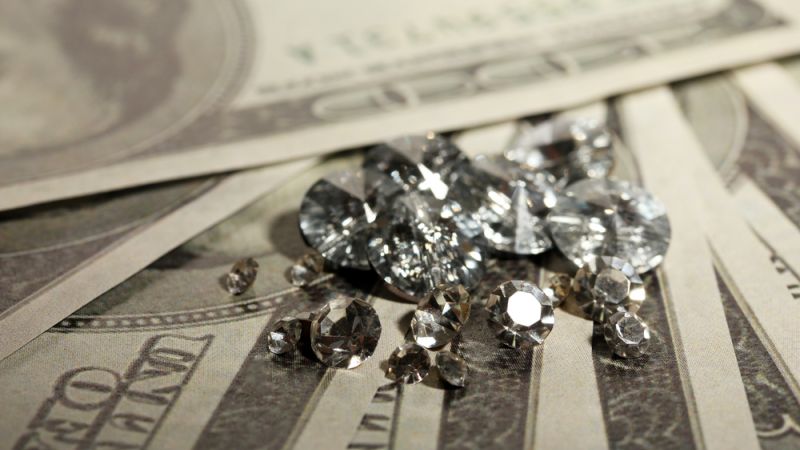
Lab-Made Vs. Natural: Price Difference
The price advantage of lab-grown diamonds is a topic frequently discussed. It is widely known that lab-grown diamonds, despite being almost identical to natural diamonds, are sold at significantly lower prices.
Diamonds are known for their high cost, primarily influenced by the expenses associated with excavation and global transportation. These factors greatly impact the value of natural diamonds, making them more expensive.
In contrast, the production cost of lab-grown diamonds is significantly lower compared to the excavation and transportation costs of natural diamonds. Consequently, the prices of lab-grown diamonds are notably lower.
For instance, a one-carat natural diamond can range between $1,800 and $1,500, depending on factors such as cut, clarity level, and color grade.
On the other hand, one-carat lab-grown diamonds can cost between $800 and $1,000, which is considerably less even when compared to the lowest prices of natural diamonds.
This is where lab-grown diamonds truly shine, as they provide a cost-efficient means of acquiring a genuine gem. These diamonds possess the same appearance and qualities as natural diamonds. The lower price is solely attributed to the absence of expenses associated with excavation and transportation, and it has no bearing on their quality.

Conclusion
The decision of whether to choose a lab-created diamond or a natural diamond is fairly straightforward:
If you highly value the exclusivity that comes with owning natural diamonds and can confirm their authenticity, then acquiring a natural diamond is the way to go. However, it’s essential to ensure that you are indeed getting the genuine article.
On the other hand, there are numerous reasons to opt for lab-grown diamonds, particularly if you are not concerned about the perceived luxury associated with natural diamonds. If appearance and cost-effectiveness are your primary considerations, there is no reason not to choose lab-created diamonds. These diamonds are more affordable, look identical to natural diamonds, and possess the same properties.
Additionally, by selecting lab-grown diamonds, you minimize the risk of supporting the trade of conflict or “blood” diamonds.
There are numerous advantages to choosing lab-grown diamonds, to the extent that many believe they may eventually replace natural diamonds in the future.
We hope this information has helped you understand the differences between these diamond types and has brought you closer to making an informed decision regarding your diamond purchase!


